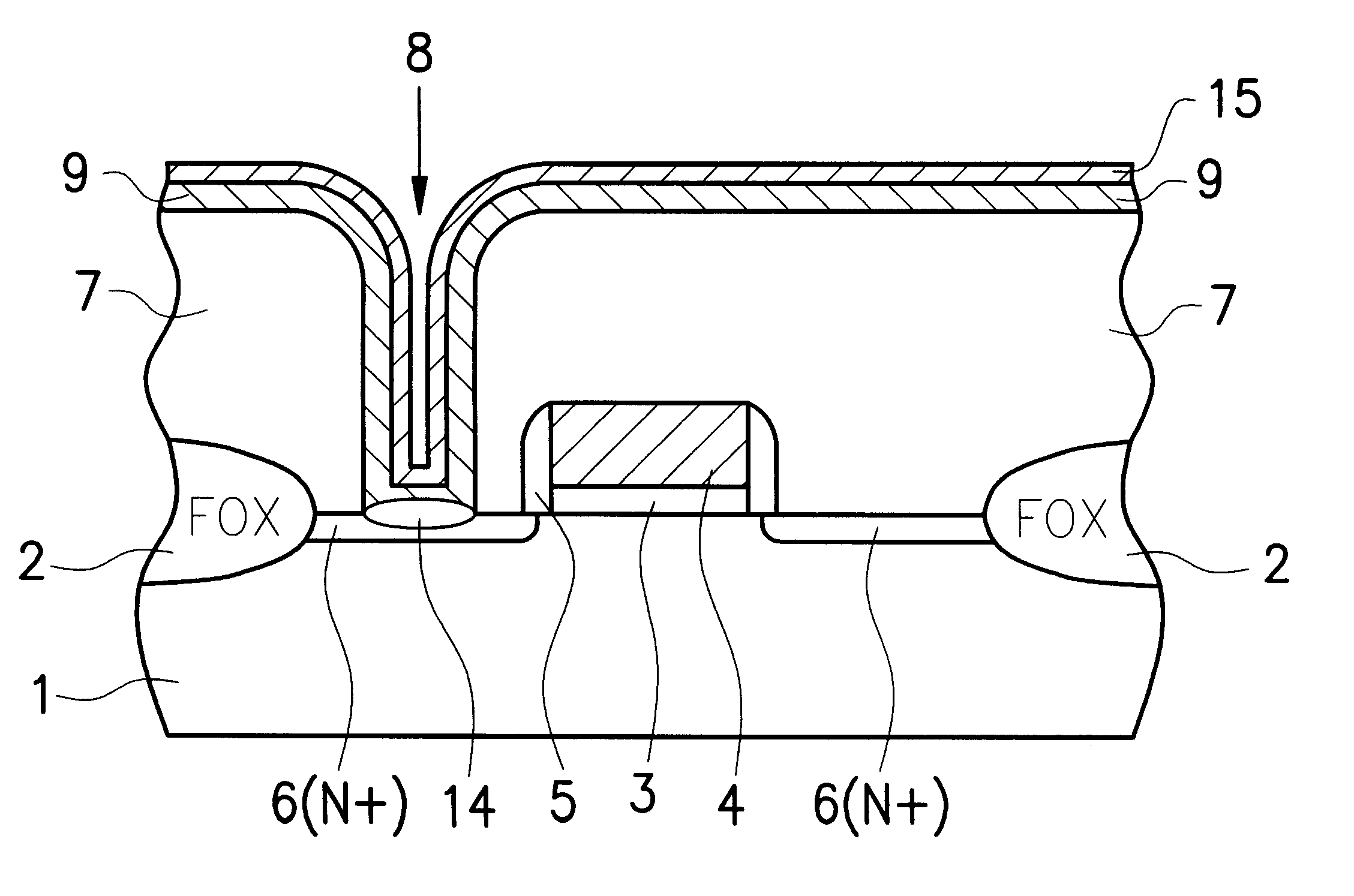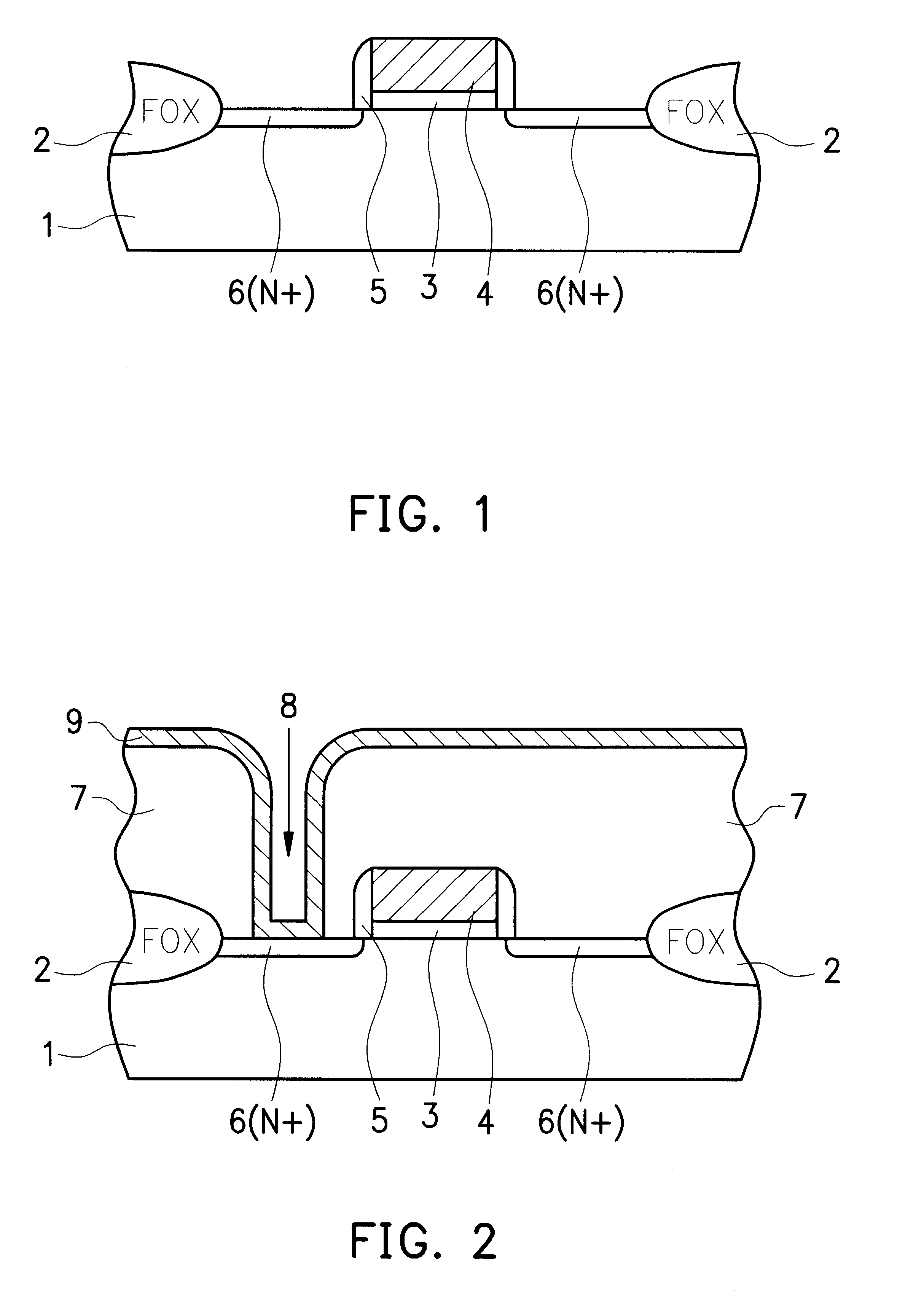Diffusion barrier enhancement for sub-micron aluminum-silicon contacts
a technology of aluminum-silicon contacts and diffusion barrier layers, which is applied in semiconductor/solid-state device manufacturing, basic electric elements, electric apparatus, etc., can solve problems such as difficulty in forming an effective barrier layer at the bottom of a contact hole with a large aspect ratio, and the effect of miniaturization
- Summary
- Abstract
- Description
- Claims
- Application Information
AI Technical Summary
Benefits of technology
Problems solved by technology
Method used
Image
Examples
first embodiment
a contact structure in accordance with this invention will now be shown in FIGS. 3-4. The structure shown schematically in FIG. 2 is subjected to a rapid thermal nitridization (RTN) procedure, preferably at a temperature of between about 600 to 800.degree. C. for a preferred time between about 60 to 100 seconds, in a nitrogen, ammonia or other nitrogen-containing ambient. This procedure results in the formation of a titanium disilicide layer 10 at the bottom of contact hole 8 having a thickness of between about 200 to 500 .ANG.. The titanium disilicide layer forms an ohmic contact with the doped silicon region and thus provides a good ohmic contact between the underlying N+ region 6 and the overlying layers formed over the titanium disilicide layer in this embodiment. The RTN process, in addition to converting the bottom portion of titanium layer 9 to titanium disilicide layer 10, also converts a top or surface portion of titanium layer 9 to a titanium nitride layer 11, preferably h...
PUM
 Login to View More
Login to View More Abstract
Description
Claims
Application Information
 Login to View More
Login to View More - R&D
- Intellectual Property
- Life Sciences
- Materials
- Tech Scout
- Unparalleled Data Quality
- Higher Quality Content
- 60% Fewer Hallucinations
Browse by: Latest US Patents, China's latest patents, Technical Efficacy Thesaurus, Application Domain, Technology Topic, Popular Technical Reports.
© 2025 PatSnap. All rights reserved.Legal|Privacy policy|Modern Slavery Act Transparency Statement|Sitemap|About US| Contact US: help@patsnap.com



